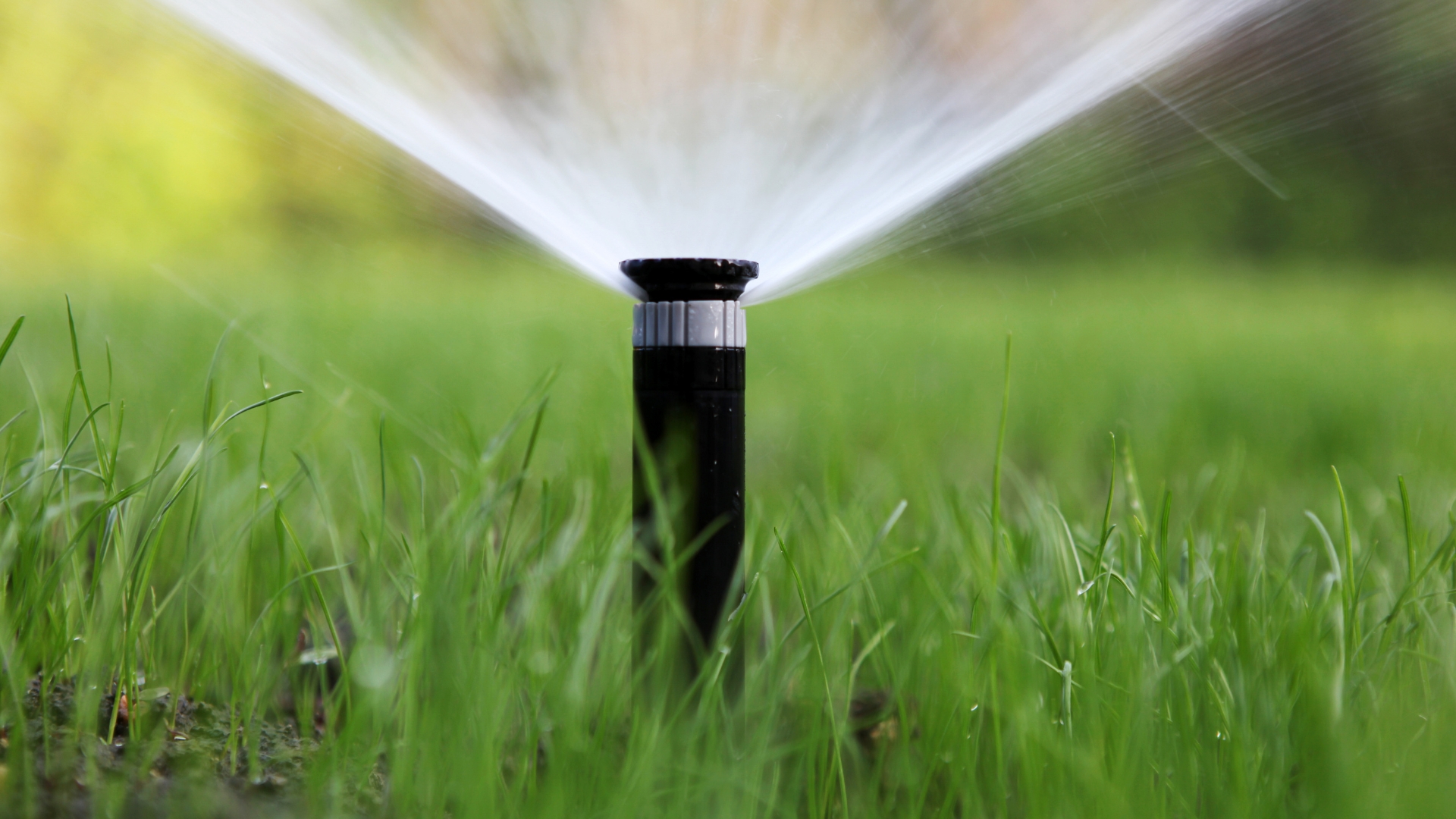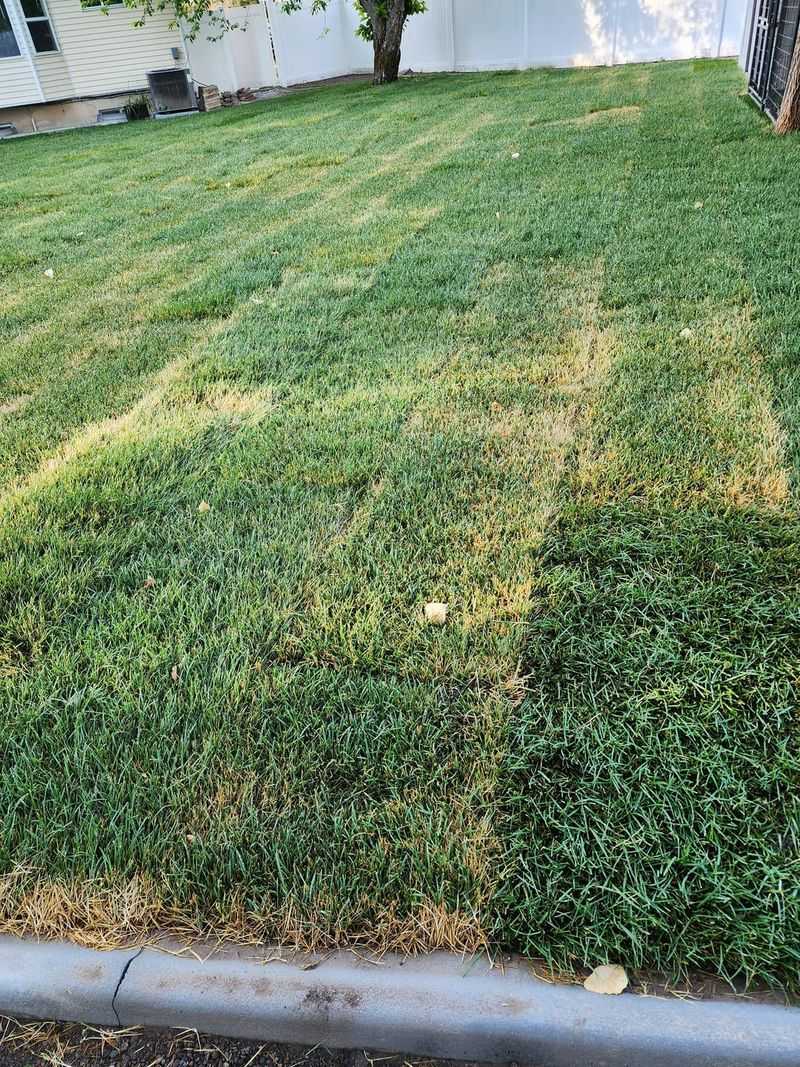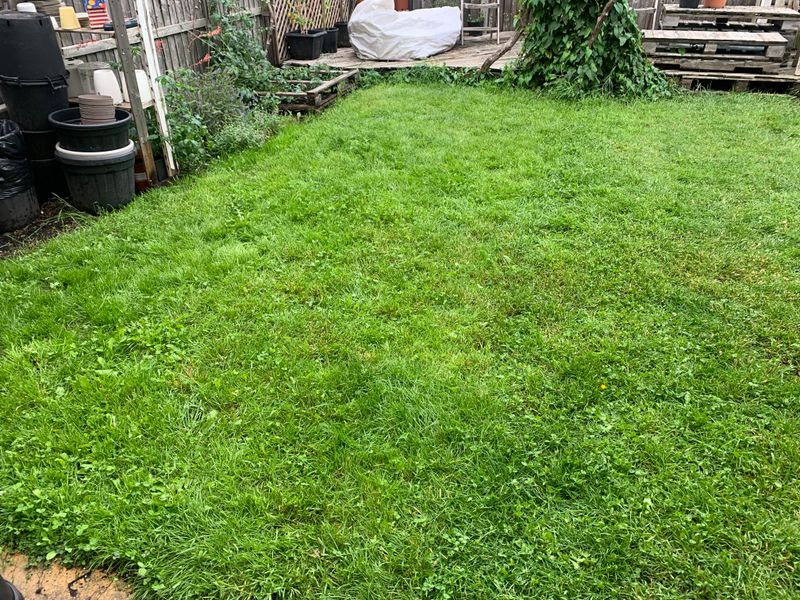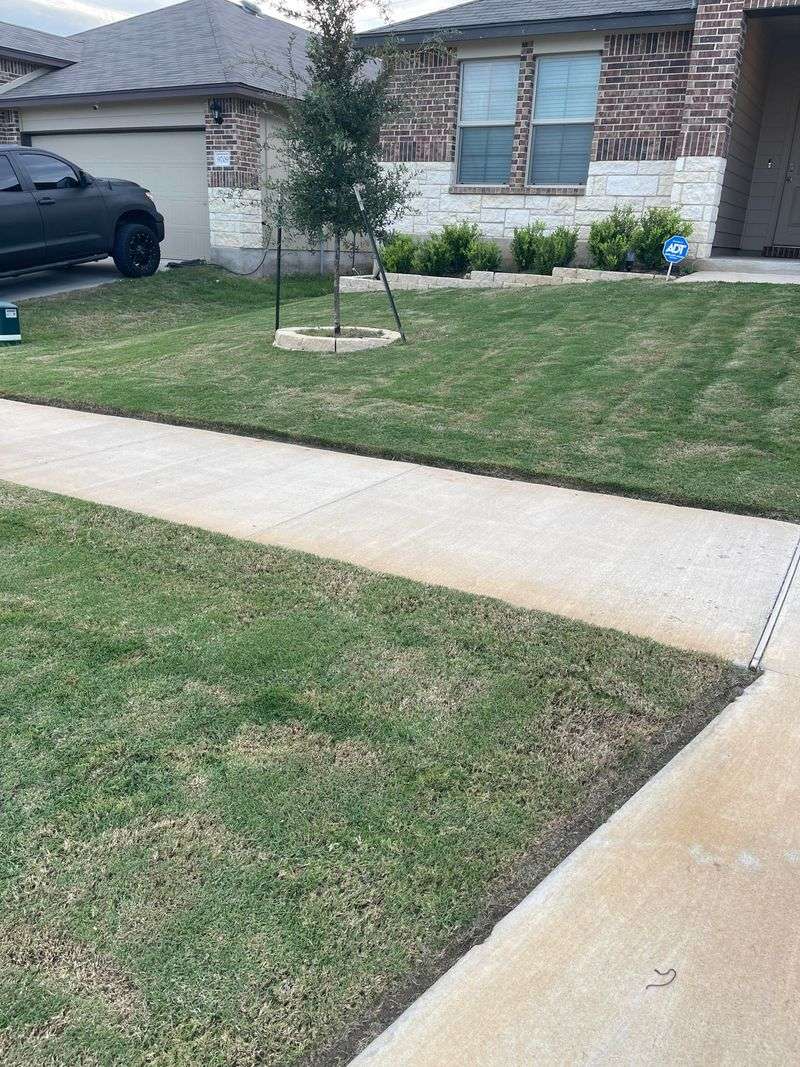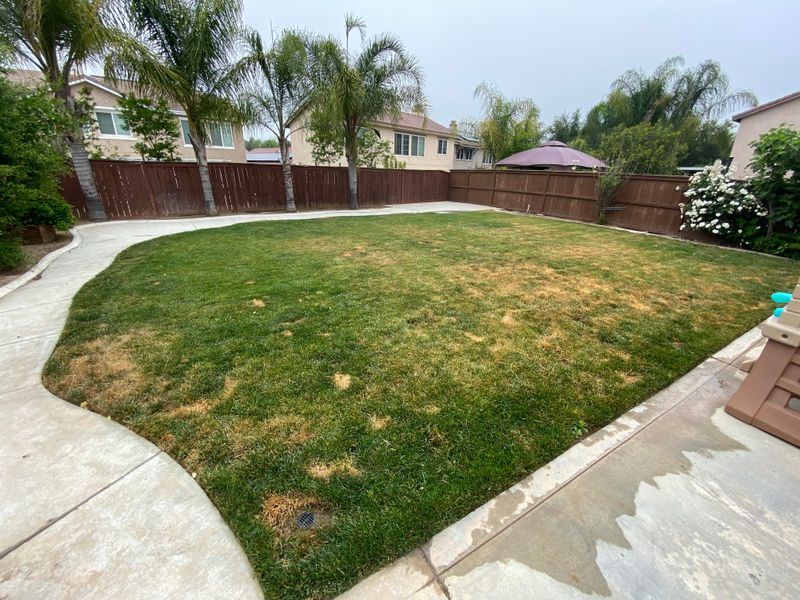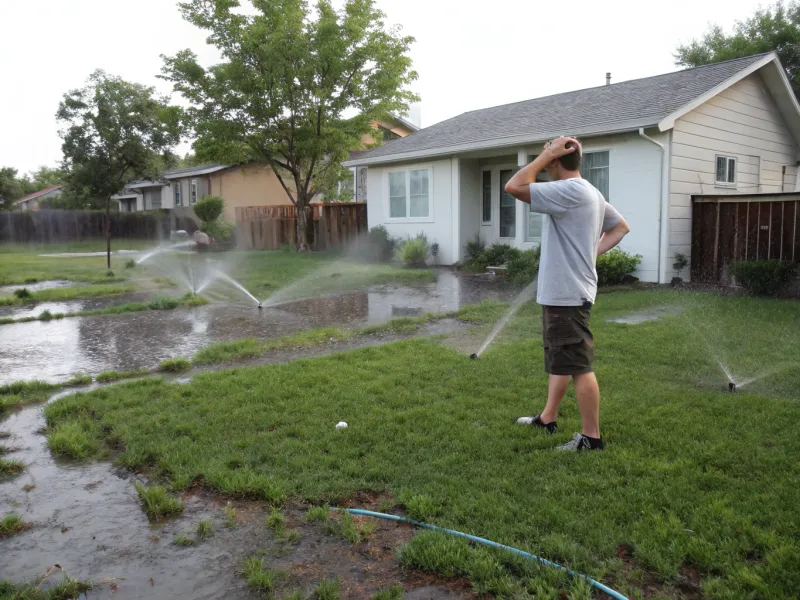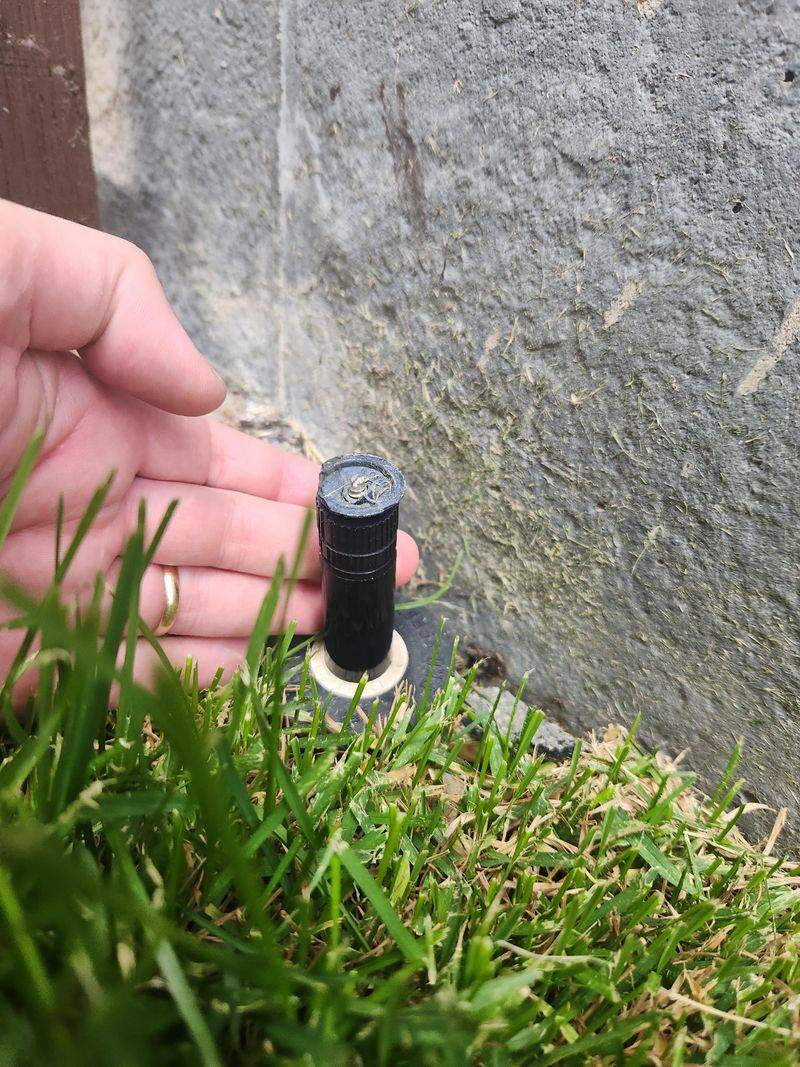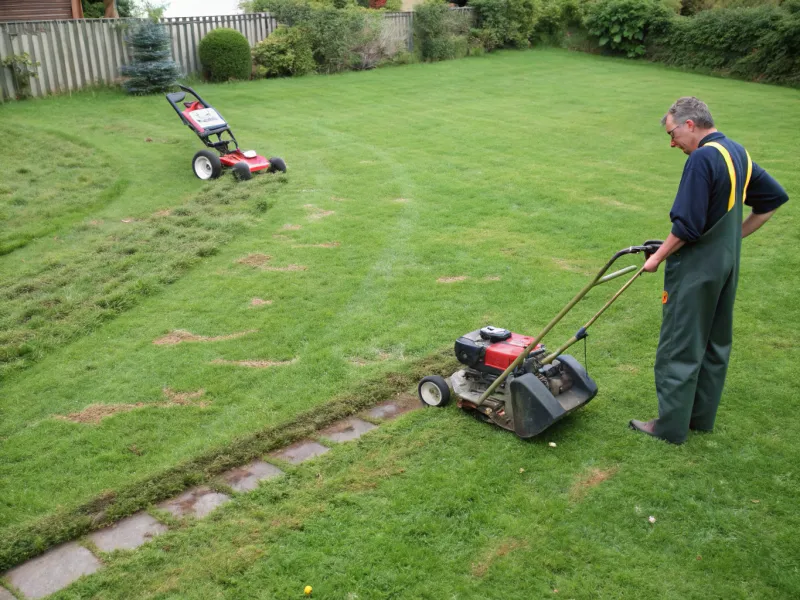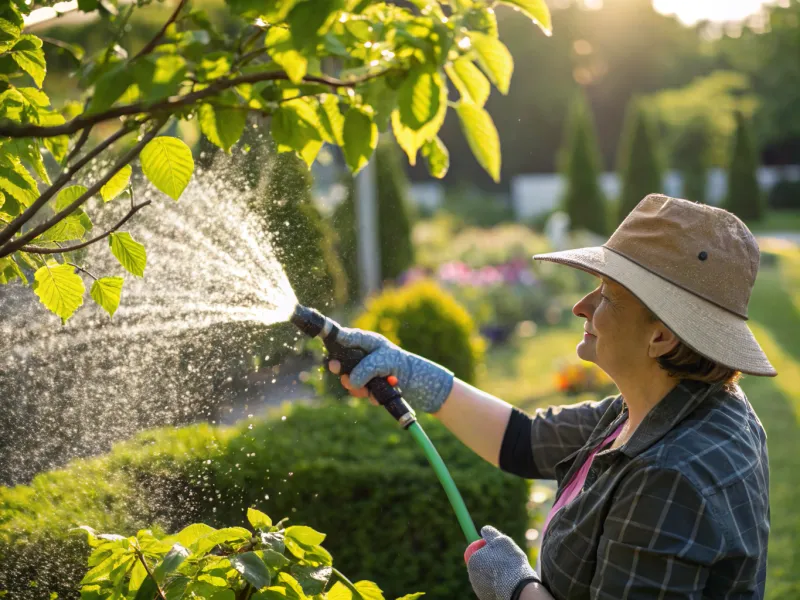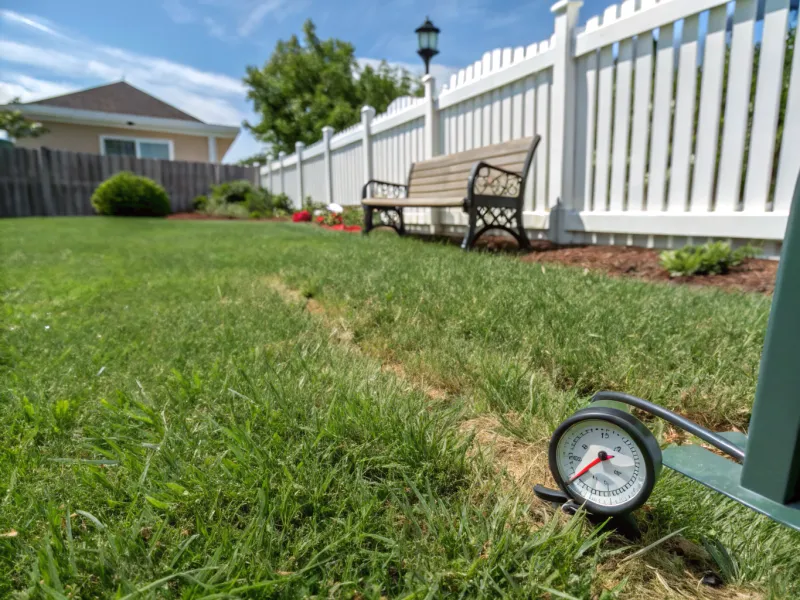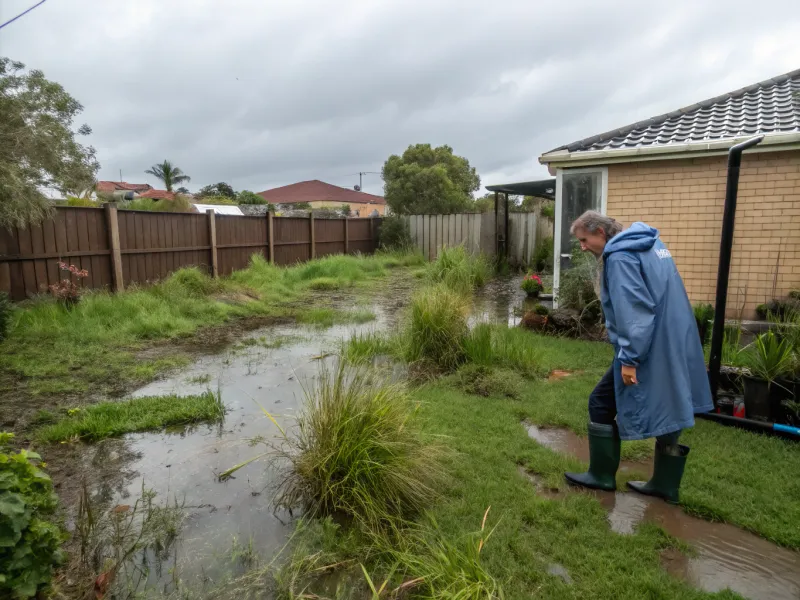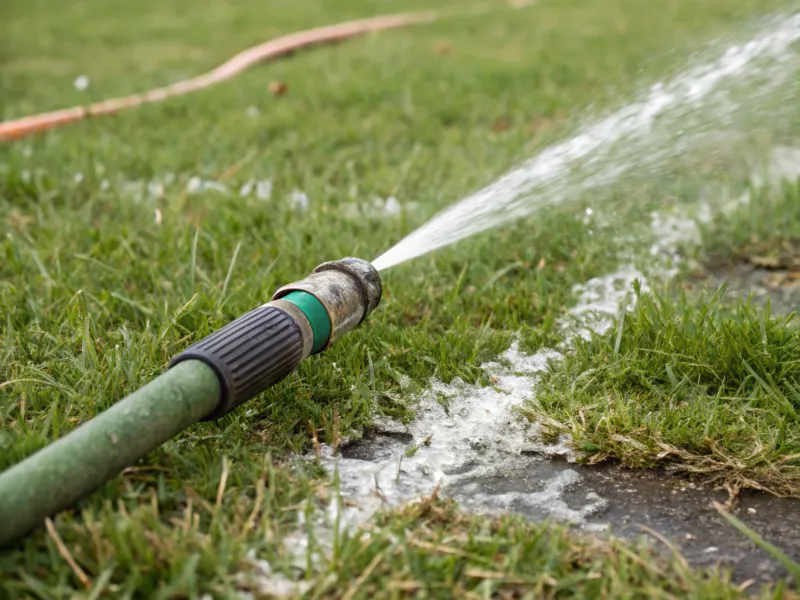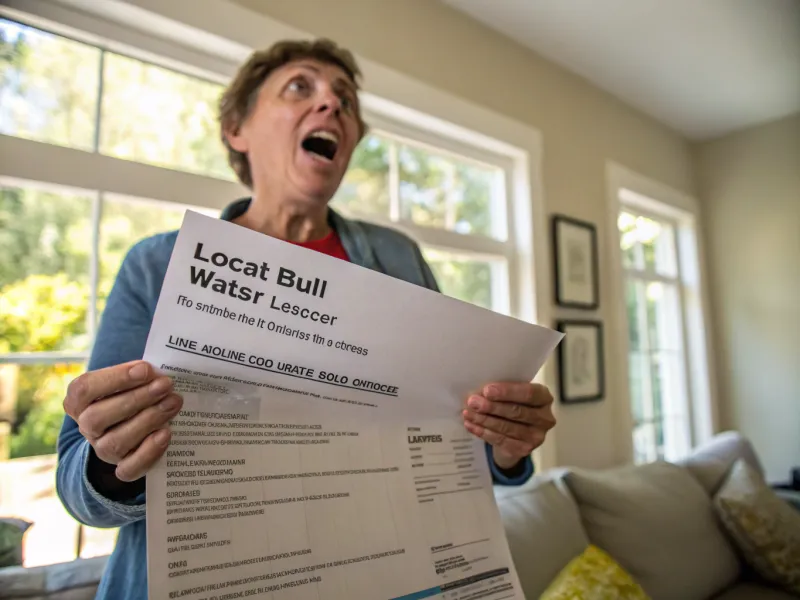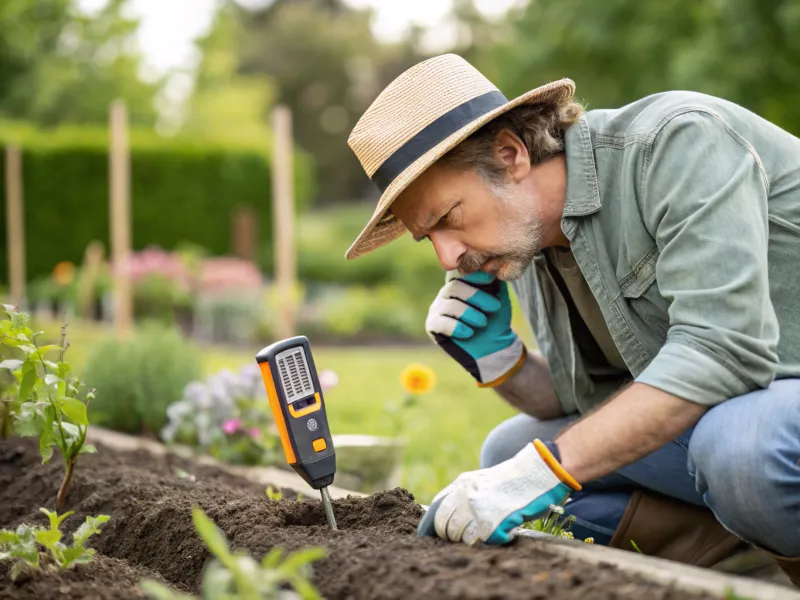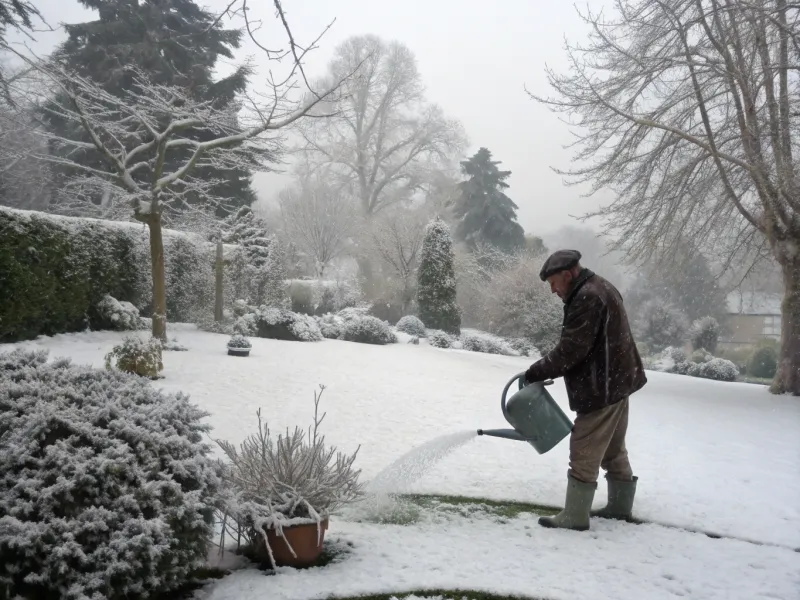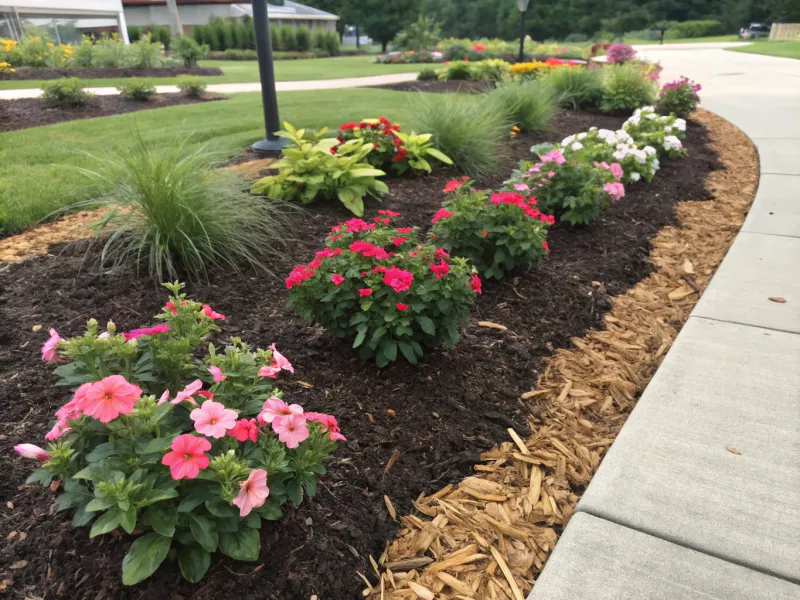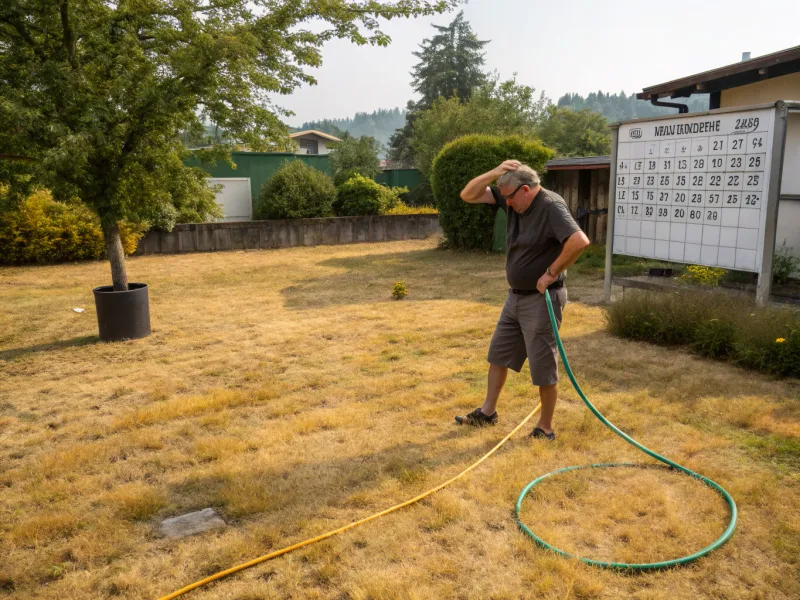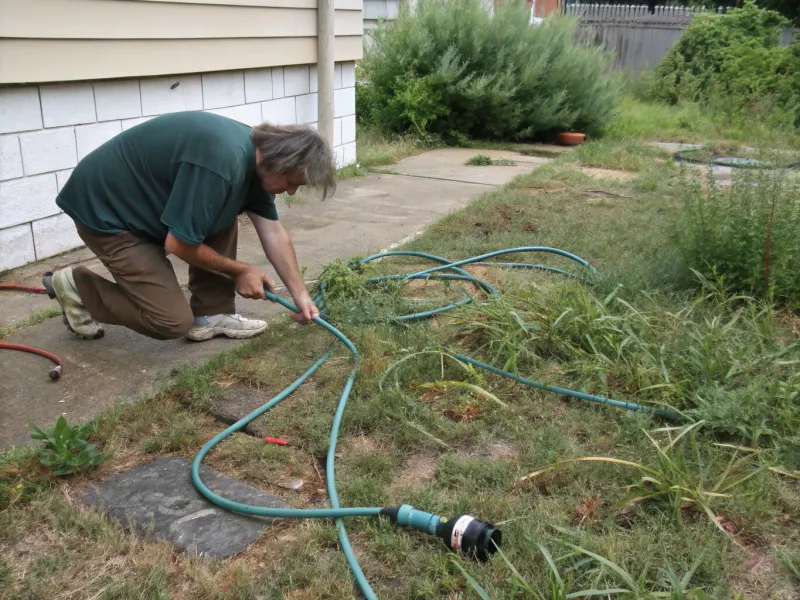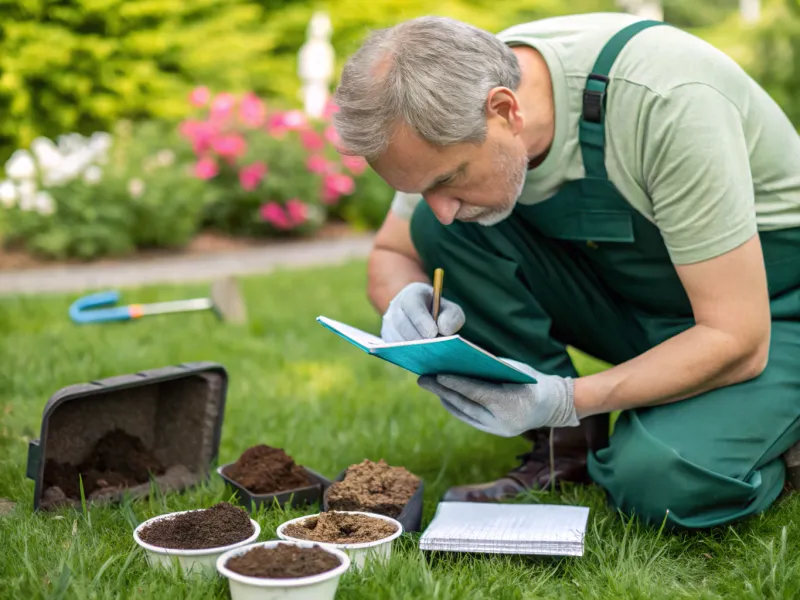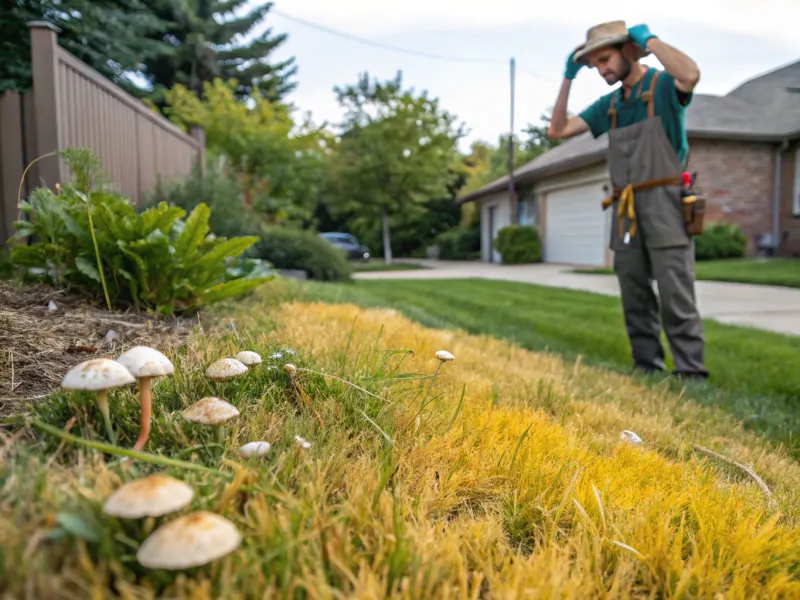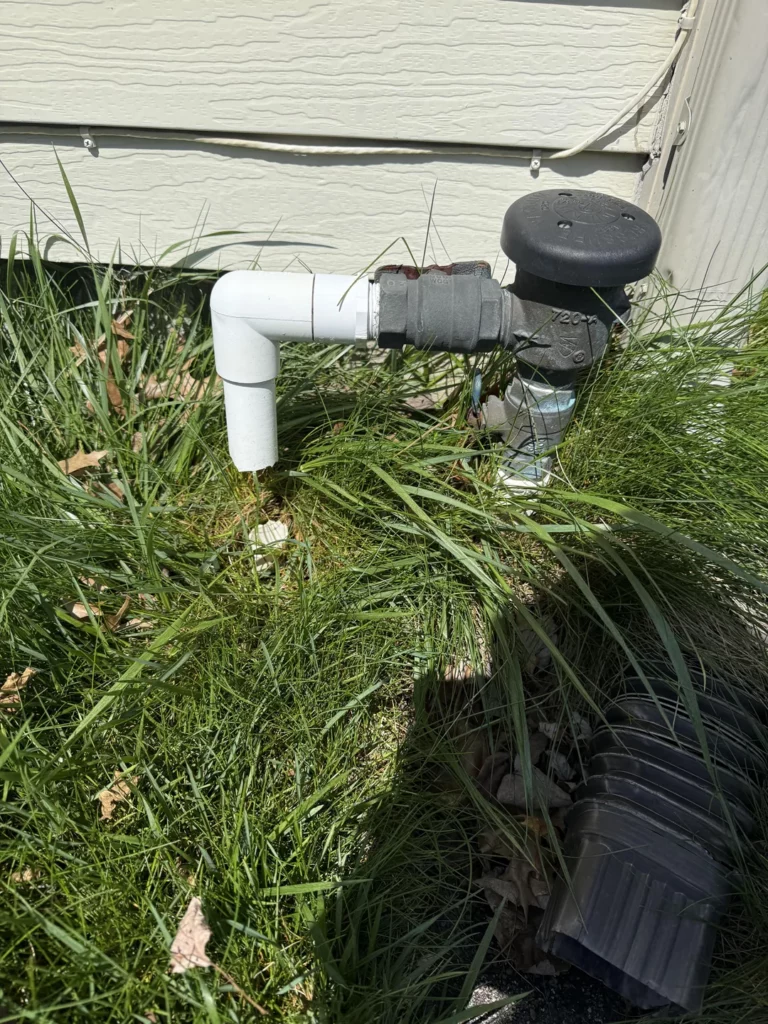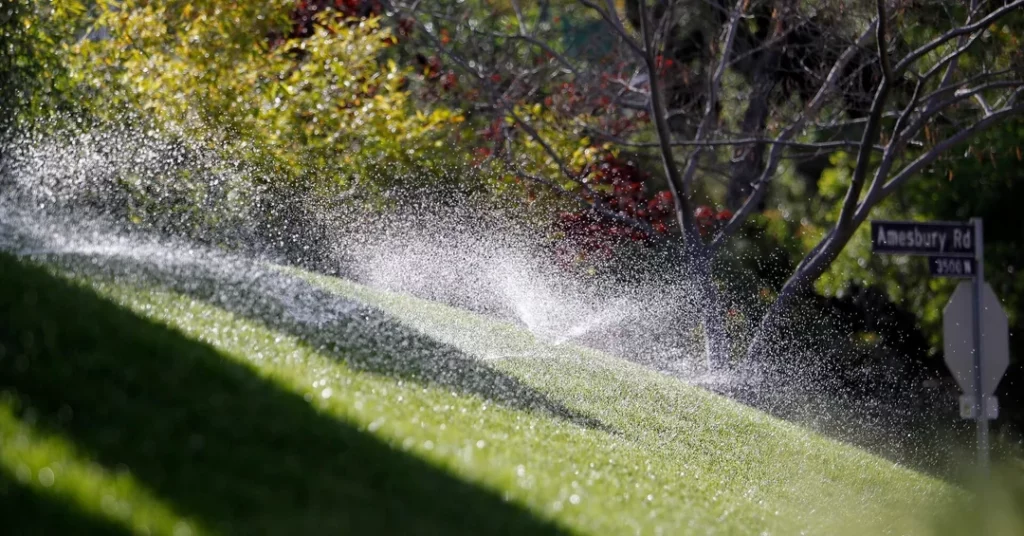Watering your lawn sounds simple, but I’ve learned the hard way that it’s easy to mess up without even realizing it. Overwatering, watering at the wrong time, or using the wrong tools can all sneak in and harm your grass more than help.
After chatting with a pro, I spotted so many little mistakes I was making — and fixing them made a huge difference. If you want a lawn that stays green and healthy without extra stress, these tips will help you get it right.
Sometimes the smallest changes make the biggest impact!
1. Watering at the Wrong Time
Watering your lawn under the blazing midday sun is like serving a piping hot latte on a scorching summer day—it’s just plain wrong! Grass, much like us, enjoys a refreshing drink at dawn or dusk when the sun isn’t frying everything in sight.
The water evaporates too quickly during the day, leaving your lawn thirsty and parched. Try to water in the early morning when the air is cool, and the wind is calm, ensuring your grass gets a proper drink.
Your lawn will thank you with a vibrant, green smile. So, swap your afternoon watering routine for a sunrise serenade!
2. Overwatering Your Lawn
If your lawn resembles a miniature swamp, then congratulations—you might be overwatering! While it’s tempting to pamper your grass, too much water can suffocate the roots and invite unwelcome guests like mold and mildew.
The trick is to find that sweet spot, the Goldilocks of watering: not too much, not too little, but just right. A healthy lawn only needs about an inch of water per week, including rainfall. So, put down that hose and let your lawn breathe. A little restraint goes a long way in keeping your grass healthy and happy.
3. Ignoring the Weather Forecast
Picture this: you’re diligently watering your lawn, all the while ignoring the ominous clouds rolling in. If Mother Nature is planning a downpour, why waste water and effort? Checking the weather forecast is a simple yet often overlooked step in lawn care.
By aligning your watering schedule with upcoming rainfall, you can save water, time, and money. Plus, your neighbors will appreciate your eco-friendly efforts. So, before you grab that watering can, consult the skies and let nature help nourish your lawn.
4. Watering Too Shallowly
A quick sprinkle might seem sufficient, but it barely scratches the surface—literally! Shallow watering leads to weak root systems, making your lawn vulnerable to drought and weeds.
To encourage deep root growth, water deeply and infrequently, allowing the moisture to seep down into the soil. Your lawn should receive enough water to penetrate 6 to 8 inches below the surface.
This fosters stronger roots and a more resilient lawn. So, trade those short, daily showers for a long, deep soak and watch your grass thrive.
5. Using the Wrong Sprinkler Type
Choosing the right sprinkler is like picking the perfect pair of shoes—it can make or break your lawn’s appearance. Oscillating, impact, stationary, or rotating—each type has its own strengths and weaknesses.
Selecting the wrong one can lead to uneven watering and patchy grass. Consider your lawn’s size, shape, and terrain before making your choice. Test different sprinklers to find the best fit for your needs. With the right sprinkler, your lawn will look like it’s been professionally pampered.
6. Neglecting to Adjust Sprinklers
You’ve invested in a state-of-the-art sprinkler system, but if it’s watering everything except your lawn, what’s the point? Regularly adjusting and checking your sprinkler heads ensures your grass gets the hydration it craves.
Misaligned sprinklers can waste water and leave parts of your lawn feeling parched. Take the time to fine-tune them for even coverage.
A well-adjusted system is your lawn’s best friend, providing consistent moisture where it’s needed. Don’t let your watering efforts go down the drain—or onto the pavement!
7. Forgetting to Aerate Your Lawn
A compacted lawn is like a sponge that’s been squeezed too tight—it can’t properly absorb water. Aeration loosens the soil, allowing water and nutrients to penetrate the roots more effectively.
By forgetting this crucial step, you risk wasting water and stunting your lawn’s growth. Aerate your lawn annually or as needed, creating small holes that improve airflow and water absorption.
8. Not Mowing at the Right Height
Setting your mower blades too low is akin to giving your lawn a bad haircut—unsightly and damaging. Cutting grass too short stresses the plants and exposes the soil, leading to increased evaporation and weed growth.
Adjust your mower to the optimal height for your grass type to protect the roots and maintain moisture. A taller lawn shades the soil, reducing water loss and promoting a healthier ecosystem. So, keep your lawn’s ‘haircut’ stylish yet practical for the best results.
9. Watering the Leaves Instead of the Roots
Spraying water over the leaves is akin to giving your grass a shower without any soap—it might feel refreshing, but it’s not effective. The roots hold the key to hydration, so aim your water at the soil where it’s needed most.
Directing water to the roots encourages deep growth and a lush, green lawn. Imagine your grass drinking deeply from a nourishing underground reservoir. Focus on the base, and your lawn will be healthier and more resilient to stress.
10. Inconsistent Watering Schedule
An erratic watering schedule is like feeding your pets at random times—it’s confusing and stressful. Consistency is key to a healthy lawn, providing regular hydration without overwhelming the roots.
Establish a routine that suits your grass type and climate, adjusting as needed for seasonal changes. Your lawn will thrive on predictability, rewarding you with uniform growth and vibrant color. So, set a timer and stick to a plan for a satisfied, happy lawn.
11. Overlooking Drainage Issues
Puddles and soggy patches are your lawn’s way of crying out for help. Poor drainage can drown your grass and invite disease, so it’s crucial to address these issues promptly. Assess your lawn’s slope, soil type, and compaction to identify problem areas.
Solutions might include regrading, aeration, or installing drainage systems. By improving drainage, you’ll protect your lawn from waterlogged woes and encourage robust growth. Keep your lawn high and dry, and it will flourish in return.
12. Using Hard Water
Hard water might work for your morning coffee, but it’s not doing your lawn any favors. The minerals in hard water can build up on grass blades, hindering their growth and causing unsightly spots.
If you notice white residue on your lawn, it might be time to test your water quality. Consider investing in a water softener or using rainwater to quench your grass’s thirst. A cleaner water source will lead to healthier, happier turf.
13. Ignoring Local Water Restrictions
In some areas, water restrictions are as common as sunburns in summer. Ignoring these regulations can lead to hefty fines and unnecessary environmental strain. Stay informed about local watering guidelines and adjust your schedule accordingly.
Embrace conservation methods like drip irrigation or rainwater harvesting to maintain your lawn responsibly. By respecting restrictions, you’ll contribute to a more sustainable community and keep your wallet happy. Be a water-wise warrior and champion of eco-friendly lawn care!
14. Not Testing Soil Moisture
Guesswork and gardening rarely go hand in hand. Without testing your soil moisture, you might be overwatering or underwatering without even knowing it. A moisture meter is a handy tool that removes the guesswork, providing precise readings for optimal watering.
Regularly check soil moisture levels to tailor your watering routine to your lawn’s needs. This thoughtful approach will lead to healthier grass and fewer surprises. Trust in the science and let your lawn guide you to greener pastures.
15. Using the Same Routine Year-Round
Applying the same watering routine throughout the year is like wearing shorts in winter—it just doesn’t make sense. Different seasons bring varying weather conditions, affecting your lawn’s water needs. Adjust your routine to account for changes in temperature, rainfall, and growth patterns.
Your lawn may require more water during hot, dry months and less during cool, wet seasons. By adapting your approach, you’ll support your lawn’s health year-round. Embrace the change and let your lawn shine in every season.
16. Not Using Mulch
Mulch is like a cozy blanket for your garden, keeping moisture locked in and weeds at bay. Skipping this step can lead to greater evaporation and a thirstier lawn. By adding a layer of organic mulch, you’ll help maintain soil moisture and temperature while nourishing the roots.
Your lawn and garden will benefit from this extra layer of protection and care. Embrace the power of mulch and watch your landscape flourish with gratitude. A little effort goes a long way in achieving vibrant growth.
17. Watering Too Frequently
Watering your lawn too often is like overfeeding a goldfish—it seems kind, but it’s ultimately harmful. Frequent watering can lead to shallow roots, making your grass more susceptible to drought and disease. Instead, aim for deeper, less frequent waterings to encourage robust root growth.
Your lawn will develop resilience, standing strong against the elements. So, let your grass dry out between watering sessions and thrive on a more thoughtful schedule. A happy lawn is all about balance and moderation.
18. Using Improper Watering Tools
The right tools can make all the difference in lawn care. Struggling with a leaky hose or clogged nozzle is like trying to paint a masterpiece with a bent brush. Invest in quality watering tools that provide even coverage and ease of use.
From hoses to nozzles, ensure your equipment is up to the task of nurturing your lawn. Proper tools lead to more efficient watering and a healthier, happier landscape. Don’t let poor equipment hold you back from achieving lawn perfection.
19. Underestimating Soil Type
Soil type is the unsung hero of successful lawn care. Ignoring its influence is like baking without measuring ingredients—disastrous! Different soils have distinct water retention capabilities, affecting your lawn’s needs.
Test your soil to understand its unique characteristics and adjust your watering schedule accordingly. Sandy soils may need more frequent watering, while clay holds moisture longer. By respecting your soil’s nature, you’ll foster a lawn that thrives like never before.
20. Ignoring Signs of Overwatering
Overwatering might seem harmless, but it can lead to a soggy nightmare. Mushrooms and yellowing grass are clear indicators that your lawn is drowning. These signs shouldn’t be ignored, as they signal a need for change.
Cut back on watering and allow the soil to dry out, giving your grass room to recover. By recognizing and addressing these symptoms, you’ll restore your lawn’s vitality. Listen to your grass’s cries for help and adjust your care to bring balance back to your landscape.
21. Watering During Windy Conditions
Trying to water your lawn on a windy day is like chasing a balloon through a hurricane—futile and frustrating.
Wind scatters water droplets, leading to uneven coverage and wasted effort. Most of that precious water ends up on sidewalks, driveways, or evaporating into thin air before it ever reaches your soil.
Plan your watering on calm days when the breeze won’t carry water away from your lawn. If wind is unavoidable, water early in the morning when winds are typically at their lightest.
22. Failing to Calibrate Your Irrigation System
An irrigation system is only as good as its settings. If your system isn’t properly calibrated, you could be flooding one section while starving another.
Uneven watering leads to patchy growth and unnecessary water waste. Run occasional checks to measure output and distribution across your lawn.
Use simple tools like catch cups or tuna cans to track how much water each zone receives. A few tweaks to the system can make a world of difference, giving every blade of grass its fair share of hydration.
23. Failing to Adjust for Lawn Slope
Watering a sloped lawn without adjusting your technique is like pouring syrup on a pancake that’s sliding off the plate—it all runs off before it can soak in! Slopes present a unique challenge because water tends to flow downhill, leaving the upper areas dry and the lower ones oversaturated.
To combat this, use a slower watering method or cycle-and-soak technique—watering in short bursts with breaks in between. This gives water a chance to absorb gradually rather than rushing away.
By tailoring your approach to the slope, you’ll promote even moisture distribution and stronger root development across your lawn. It’s a simple tweak that makes a world of difference on hilly terrain.
24. Relying Solely on Automated Systems
Automation can be a lifesaver—until it isn’t. While irrigation systems and timers offer convenience, depending on them blindly is like setting your oven to “bake” and leaving the house for hours. Without supervision, you risk watering during rainstorms, over-saturating dry patches, or ignoring broken equipment.
These systems are great tools, but they still need a human touch. Regularly check your system for malfunctions, leaks, or misaligned sprinkler heads. Update settings based on seasonal changes and rainfall. Think of automation as your lawn’s assistant—not the boss.

